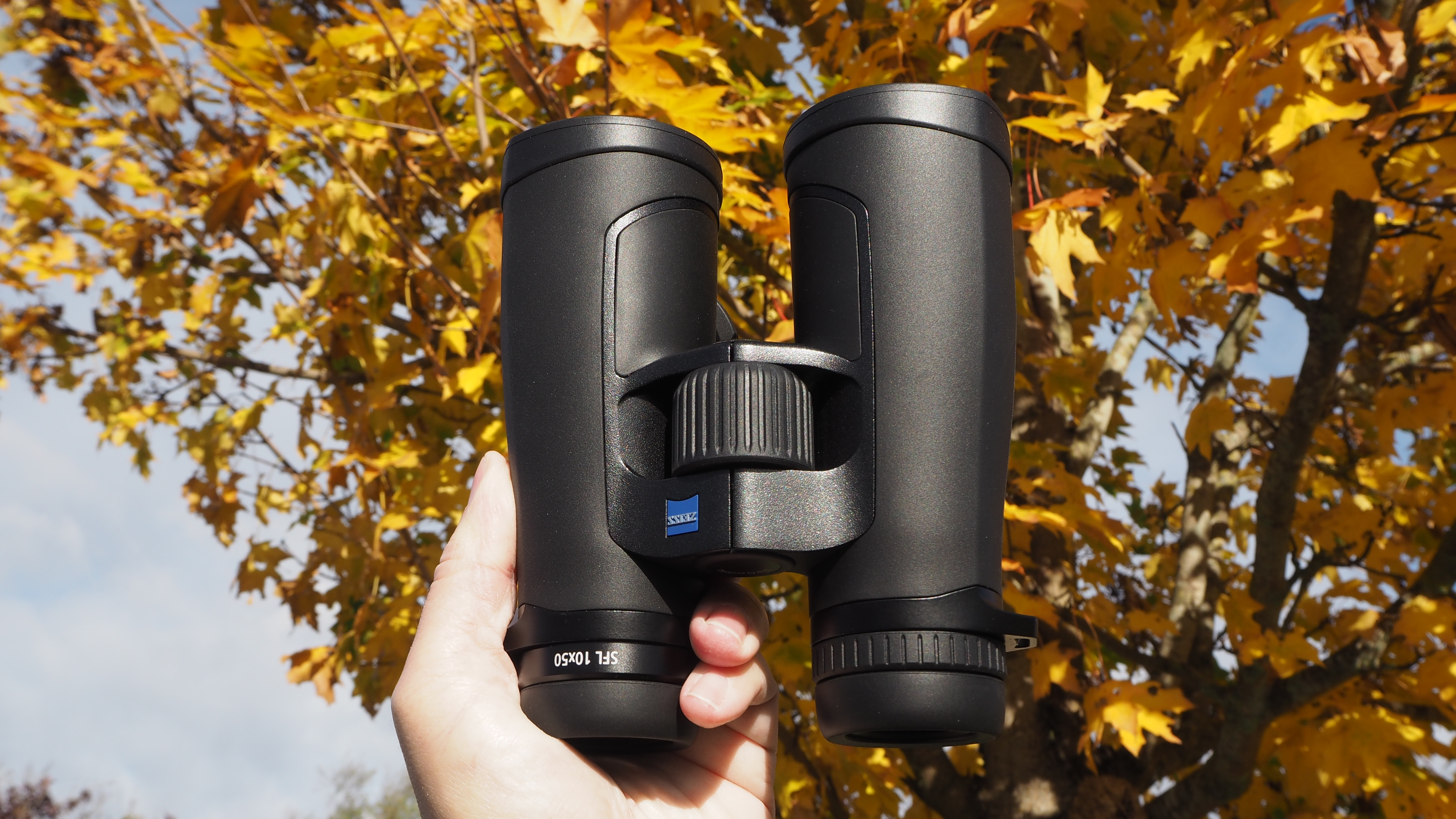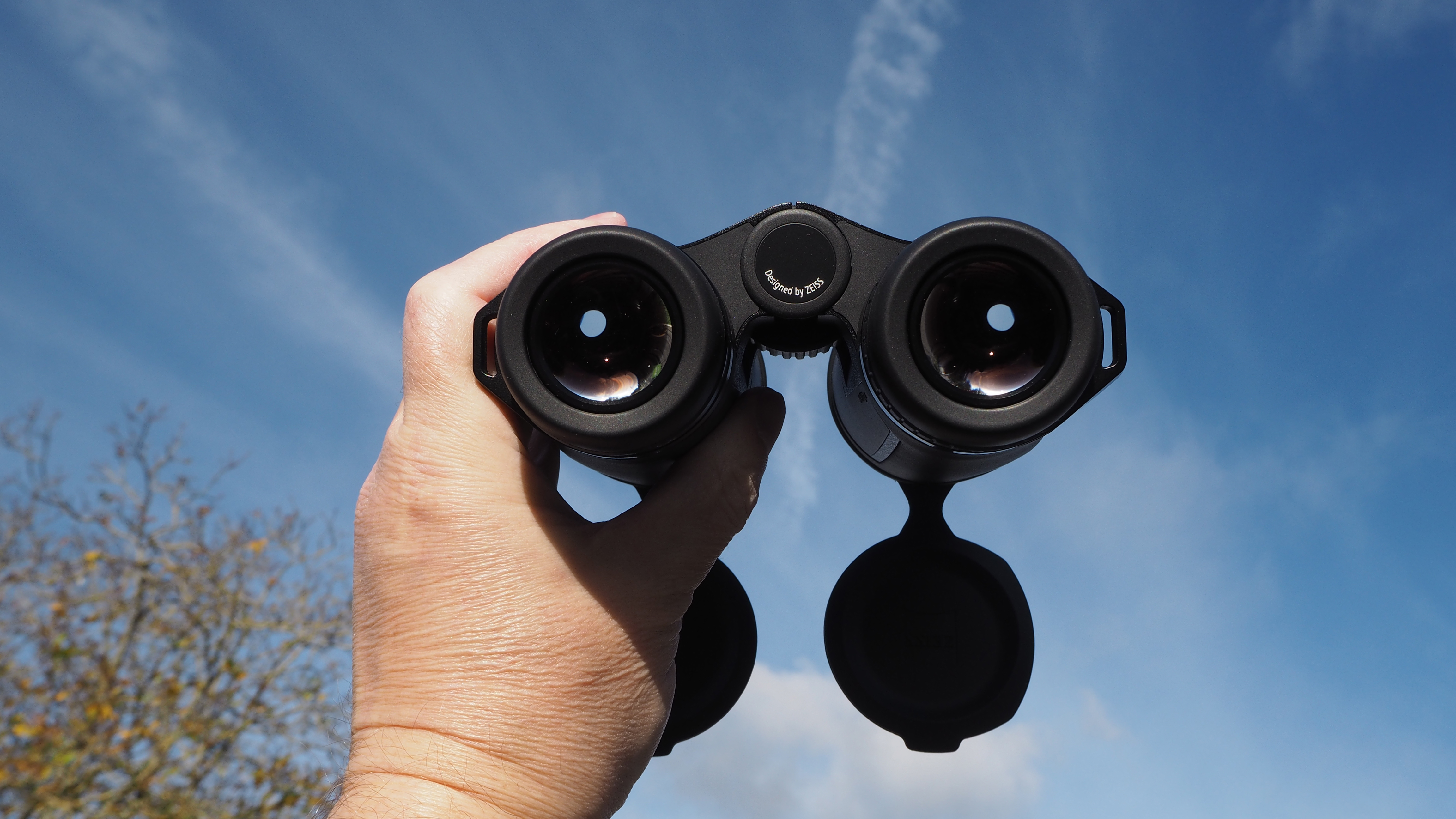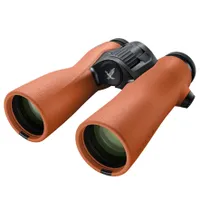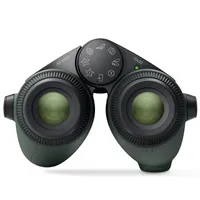Digital Camera World Verdict
The adage ‘you get what you pay for’ rings true here. For their relatively compact build, these Zeiss SFL 10x50 deliver a big performance. Providing crystal-clear, razor-sharp observation, the view takes on an almost three-dimensional quality, such is the contrast, color, and definition. This makes identification and tracking of skittish subjects a cinch. With only rare flashes of purple fringing on very bright days between areas of high contrast, where tree branches or a roof edge meet a clear blue sky – and only noticeable if actively looking – I was very impressed with the ergonomics, portability, and build quality here. If you can afford the investment, this is a top-notch, seriously reliable product capable of class-leading results. Zeiss has chalked up another winner worthy of its enviable reputation.
Pros
- +
Generous objective lens size gathers more light
- +
Premium construction and design
- +
Compact and lightweight for their class and specification
- +
Ultra-high-definition optics further aid clarity
Cons
- -
No screw thread for tripod mounting
- -
Very occasional minor instances of chromatic aberration/purple fringing
Why you can trust Digital Camera World
Zeiss is a world-renowned expert in optics, so anything featuring its glass inevitably comes with a premium price tag, including its own SFL 10x50 binoculars. But why ‘SFL’? In Zeiss’s world, this stands for ‘Smart Focus’ and ‘Lightweight’. While the 'Lightweight' aspect is self-explanatory, the Japanese-made binos' blurb suggests ‘Smart Focus’ relates to the positioning of a large, ridged focus wheel between the eyepieces. There’s nothing unusual about this control’s centralized location, or anything noticeably ‘smart’ about it, but its maker insists its ergonomics enable fast focus adjustment. Which I wouldn’t argue with: its tactile and responsive functionality is undoubtedly useful for tracking moving wildlife.
I believe the jewel in this model’s crown, however, is its ultra-high definition 50mm objective lenses. The manufacturer says that it has managed to squeeze these into a traditional 42mm frame size. What’s more, the combination of 50mm lenses and larger exit pupils is claimed to allow for 42% more light than competing 42mm binoculars. The result, to my eyes, is a noticeably brighter image than expected from a device of this size.
But, given the sizeable cost of investing in a pair, do the Zeiss SFL 10x50 provide birdwatchers and nature lovers with an equally large return, in terms of not only usability, but also performance? Read on to find out.
Zeiss SFL 10x50: Specifications
Magnification | 10x |
Objective lens size | 50mm |
Field of view at 1000 yards | 366m |
Eye relief | 18mm |
Minimum focus distance | 1.8m |
Dimensions | 160x132mm |
Weight | 873g |
Zeiss SFL 10x50: Price
While their specification packs a punch and the performance promises to be top-notch, at £1,899 / $1,799.99 / AU$3,273, the cost of these Zeiss binoculars reflects their sophistication. For slightly less money, a sensible alternative would be image-stabilized binoculars like the Fujifilm Fujinon Techno-Stabi TS-L 2040, with smaller 40mm objective lenses yet a more powerful 20x magnification. That said, I feel the observational quality of these Zeiss binoculars, in terms of achievable clarity, is a step up from the Fujifilm.
A closer performance, in terms of sharpness and clarity, comes from the premium Swarovski NL Pure 10x42, though they are a fair whack more expensive than even these Zeiss binos as a result. Ultimately, it feels like this model sits between the very, very good and the absolute best when it comes to high-powered premium binoculars; a very respectable market segment to sit in. Further options in the Zeiss SFL range exist in the simultaneously released 8x50 and 12x50 models.
Zeiss SFL 10x50: Design & Handling
Rendered in serious black, these SFL 10x50 binos have a very conventional-looking yet classy design. The quality of their construction feels high. A big lens usually means additional weight, but Zeiss claims a magnesium body construction has ensured they are around 19% lighter than competing binoculars with a 50mm lens.
They certainly do not feel heavy in the palm, but nor are they so lightweight that holding them steady proves a problem. There’s enough real estate here that I was able to get a nice firm grip on the rubberized surface and experience judder-free viewing handheld. That’s just as well, as there is no screw thread on the unit for possible tripod mounting if arms get tired or shoulders stiffen.
The best camera deals, reviews, product advice, and unmissable photography news, direct to your inbox!
The focus wheel is much chunkier than expected. That and its central location enabled me to find it easily with my fingertips, without needing to take my eyes away from the eyepieces. Here, focusing is possible from just shy of six feet to infinity. The official claim is that it takes 1.4 ‘turns’ of the wheel to move through the entire available range. I find a lot of focus wheels to be very stiff in use to prevent accidental jogging. On the Zeiss, by contrast, the action feels just right, so I can quickly find critical focus a second or two after sighting a possible subject.
It’s not just the larger-than-average 50mm objective lenses that aid light transmission, but also the various coatings applied to the lens elements, including what Zeiss terms its T-Star multicoating, which claims to boost light, color, and contrast, plus a hydrophobic coating that allows for use in all weathers. That’s welcome, as I don’t want to be constantly stopping to wipe binoculars clean if I’m using them in the rain. The body is nitrogen purged, which means it should not fog up in damp conditions, either.
For added comfort, there is a bit of give to the binoculars’ central mechanism, which allows for the interpupillary distance to be adjusted to better suit one’s own eyes. Eyecups are of the twist-up variety, and there is a dioptric adjustment dial encircling the right eyepiece for fine-tuning, if needed. I found this control a little stiff to turn, but I didn't feel the need to use it anyway.

Zeiss SFL 10x50: Performance
Capable of focusing from just under six feet away to infinity, these Zeiss SFL 10x50 binoculars are practical, versatile, and, in terms of quality of image, deliver a real wow. I came to use them after recently testing the rival Fujifilm Fujinon Techno-Stabi TS-L 2040 and 1640, and though they are capable performers in the image-stabilized binocular segment, the difference these Zeiss binoculars made was immediately noticeable and very positive. In my view, these Zeiss are second only to the more expensive Swarovski NL Pure 10x42 in terms of naturalistic, life-like results.
Peering through these binoculars not only gave me a brighter view than expected, but one that was crystal clear, right into the edges of the frame. Suddenly, I was up close and personal to the beak of a yawning seagull resting on a post, some six feet from me. I could also zoom in on people taking in the air on their apartment balconies on the other side of the river, without any visible softness or distracting judder when using the binocular handheld.
Chromatic aberration is well controlled, though on very bright days, I did very occasionally spot flashes of purple fringing between areas of high contrast. In fairness, that was only because I was actively pointing the binoculars at more challenging subjects and actively seeking out possible instances. Overall, the Zeiss SFL 10x50 punches above its size and weight in terms of performance.

Zeiss SFL 10x50: Verdict
Sometimes quality costs, and that’s certainly the case with these Zeiss SFL 10x50; their decent magnification is wedded to generously sized objective lenses that let in plenty of light. This adds up to razor-sharp images with a real natural depth and a wow factor that justifies the asking price. I found they assisted me in the identification of fine, distinguishing details from afar. It makes these binoculars a top choice for birders, nature, and wildlife fans who want premium quality while also providing a slightly more affordable alternative to luxury binoculars from the Swarovski brand.
Features ★★★★1/2 | Premium lens coatings coupled with large objective lenses housed in a compact, manageable frame maximize light transmission and clarity of observation along with it. |
Design ★★★★ | A very conventional design with large, raised focus wheel meant that I was able to quickly get up and running with these binoculars, any required adjustments being both swift and intuitive. |
Performance ★★★★1/2 | Apart from very rare instances of purple fringing, if being picky, the performance of these Zeiss binoculars is stunning in their brightness, clarity and depth, punching above their size and weight. |
Value ★★★★ | These premium-priced binoculars deliver a premium performance. Worth paying for? Yes if you can justify the expense, which still looks like fair value compared to even more serious birding tools from Swarovski et al. |
Alternatives
Even more expensive than the Zeiss, the Swarovski NL Pure 10x42 provides a step up again in terms of performance quality and image sharpness, though to achieve this, you’ll be expected to shell out a third of the SFL 10x50’s cost again, and for 42mm rather than 50mm objective lenses.
If your knowledge of wildlife may benefit from built-in AI features able to identify what it’s being pointed at, also check out Swarovski’s AX Visio 10x32 binoculars. The view provided is a definite 'wow' in terms of observational sharpness and light transmission. However, they are even more expensive again.
Gavin has over 30 years’ experience of writing about photography and television. He is currently the editor of British Photographic Industry News, and previously served as editor of Which Digital Camera and deputy editor of Total Digital Photography.
He has also written for a wide range of publications including T3, BBC Focus, Empire, NME, Radio Times, MacWorld, Computer Active, What Digital Camera and the Rough Guide books.
With his wealth of knowledge, Gavin is well placed to recognize great camera deals and recommend the best products in Digital Camera World’s buying guides. He also writes on a number of specialist subjects including binoculars and monoculars, spotting scopes, microscopes, trail cameras, action cameras, body cameras, filters and cameras straps.
You must confirm your public display name before commenting
Please logout and then login again, you will then be prompted to enter your display name.






